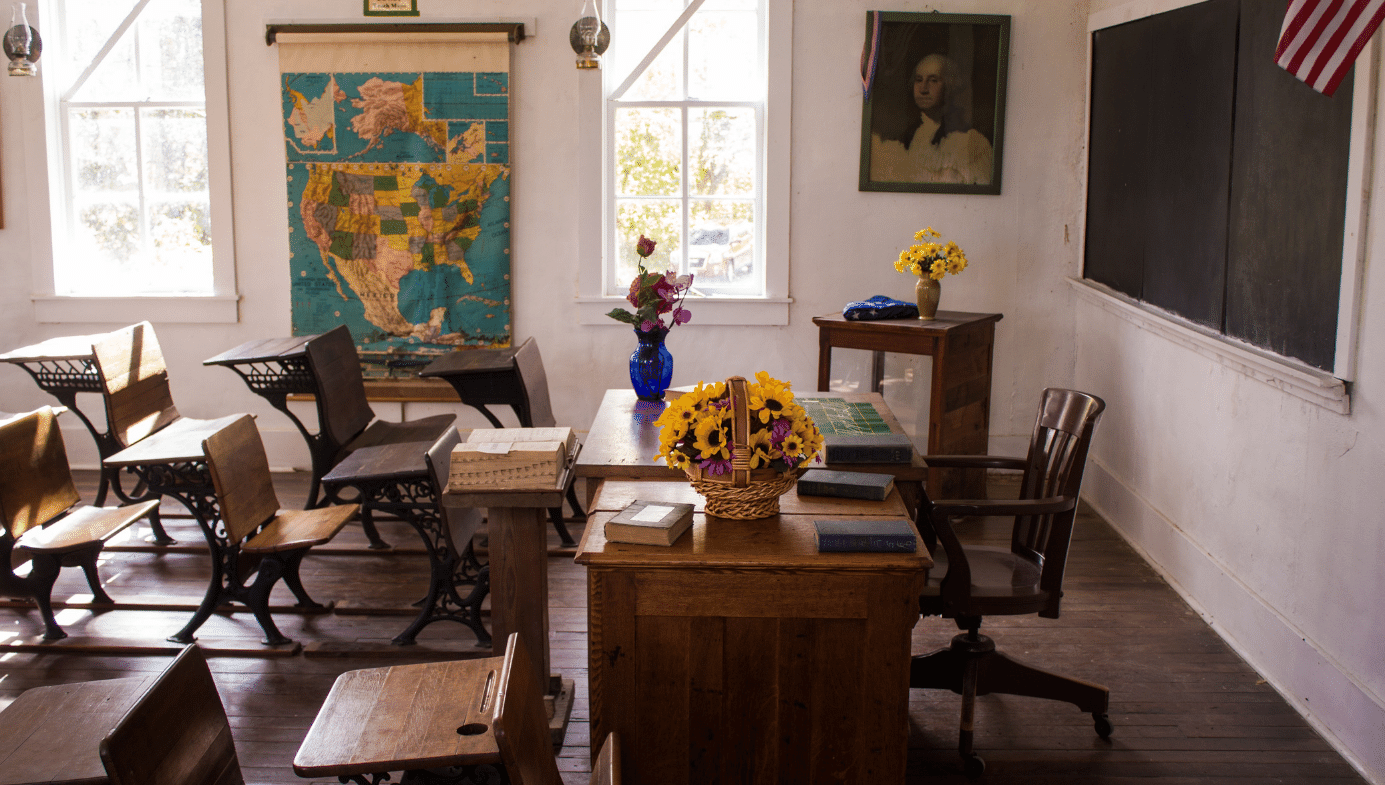Art
Experiments in Nurturing Classroom Curiosity
In a classroom, curiosity should be sacred, because it motivates the pursuit of knowledge even when that includes ugly truths.

Last semester, I was asked to teach a class about “socially engaged art” for the University of Colorado Denver, where I am an adjunct professor for the studio arts program. I was both surprised—did they know I gave a lecture at the University of New Orleans titled “Against Political Art” in 2017?—and delighted, because it was my first opportunity to teach an upper level discussion course, instead of introductory drawing and painting classes that focus on technical skills. The structure of the course was two-part, with half our time spent in class discussions and the other half as studio hours for students to create their own socially engaged art. Because my goal was to prepare the students intellectually to create such work, their opinions about sociopolitical issues were central to the course. And because university campuses have developed a reputation for intellectual intolerance, I suspected that this class would become either an echo chamber or a powder keg.
After the students shared their interests, I placed my bets on the powder keg: their views ranged from pro-life even for rape victims to undemocratic socialism; there was an Army veteran who wanted more border control, and there were students who wanted to express the emotional trials of coming out as lesbians. With such rich viewpoint diversity, I was glad that I framed our first class discussion with wisdom from philosopher Daniel Dennett about criticizing with kindness. Dennett wrote four rules to safeguard against the “tendency to caricature one’s opponent,” which began with steelmanning opposing arguments, or as he put it, “You should attempt to re-express your target’s position so clearly, vividly, and fairly that your target says, ‘Thanks, I wish I’d thought of putting it that way.’” I paired this with a chapter from Thomas Sowell’s A Conflict of Visions and a video clip from Margaret Hoover’s Firing Line. About 14 min into her interview with Tamika Mallory, Hoover steelmanned Mallory’s argument that white feminists ignore black women’s concerns, and then Mallory thanked Hoover for articulating it so well for her.
In that first class discussion, one student (who was painting about being biracial) took issue with this “sterile” approach to political discussion and argued that “only white liberals without skin in the game” could appreciate it. I replied that her criticism reminded me of one of our reading assignments, an article by psychologist Paul Bloom titled “The Perils of Empathy” that summarized his book Against Empathy: The Case for Rational Compassion, in which he argued that “when it comes to guiding our decisions, empathy is a moral train wreck. It makes the world worse. When we have the good sense to set it aside, we are better people and make better policy.” After observing that my student’s description of dispassionate discussion as “sterile” is an excellent adjective for the kind of rational compassion Bloom advocates in lieu of empathy, I asked her what she thought of his ideas and the research he used to bolster his point. She was unimpressed with Bloom’s evidence, and when I asked her to steelman “The Perils of Empathy” she sternly refused. And yet the discussion did not falter, because a few other students immediately offered to try their hand at steelmanning Bloom’s position, even though no one who spoke up agreed with him.
Later on in the semester, I was surprised when a Camille Paglia article about the #metoo movement caused less of a stir than Bloom. In it she bluntly asserted, “Great art has often been made by bad people. So what?” and then went on to say that “the impulse or compulsion toward art making is often grounded in ruthless aggression and combat—which is partly why there have been so few great women artists.” Paglia was referencing and refuting Linda Nochlin’s famous essay “Why Have There Been No Great Women Artists?” that I assigned for the same discussion. Although most of my students dismissed her, one young woman (who was making art about the Madonna-whore complex) agreed with Paglia’s distaste for treating women as vulnerable. A week later, student protests broke out at the University of the Arts in Philadelphia where Paglia is a professor, and the protestors circulated a petition demanding Paglia be fired; university president David Yager defended Paglia, and she wasn’t cancelled.
I wasn’t cancelled either. Instead, this “socially engaged art” class became the highlight of my fledgling career in academia. Much of this success depended on applying the Socratic method as a model for class discussions. They were not formal Socratic Seminars, but I facilitated discussions with probing questions to encourage students to think deeper about their opinions. For example, in our conversation about censorship, a student expressed concern about violent speech. “Do you mean violent or hurtful?” I asked. After a pause, “I guess… hurtful?”
The students who disagreed with me most were the greatest joy to teach. I tried not to push my own opinions on them, but on the first day of class I shared an anecdote about the pro-choice political art that I made as an undergraduate; although I never changed my mind about abortion, I realized my art was too polarizing to further my cause. And so, I explained to my students, I understand the urge to make political art as well as the reasons not to, and that they could interpret “socially engaged art” expansively when deciding what to create for our class. When one of my students announced that she wanted to write and illustrate a children’s book that would be a metaphor about her pro-life position, I told her she was brave for boldly sharing an opinion that she knew her professor disagreed with and that was generally despised on college campuses. She impressed me further with her work ethic: she finished her richly illustrated and carefully written story early enough to self-publish it before finals, when she came to class with a stack of professional-quality hardcovers.

On the other side of the political aisle, the undemocratic socialist demonstrated a great deal of intellectual humility. He was the only student who changed his mind about any of his opinions. Throughout the semester we exchanged lengthy emails discussing Marx and human nature, and our extended conversation was precisely the kind of scholarly exchange I was hoping to enjoy when offered the opportunity to teach a discussion course. He also created an impressive body of work, by completing a series of six well-executed paintings that referenced vintage WPA National Park posters while hinting at his hopes for the future of American society (a vision that he knew deviated from my own democratic sensibilities). Over the summer, one of these paintings was accepted into a juried show at RedLine Contemporary Art Center, a celebrated non-profit arts organizations in Denver.
I never did win over the student who disapproved of Paul Bloom and steelmanning, who accused me of providing a platform for bigotry at the end of the semester when I solicited feedback from my students about the course. But she was the only one who felt that way, and out of 17 students, a handful even wished there was more viewpoint diversity. Moreover, none of them advocated for censorship—even that student who despised my class explicitly opposed it. Unfortunately, a number of them admitted to self-censorship. But in the end, my classroom became neither an echo chamber nor a powder keg.
Maybe intellectual intolerance is more of a coastal problem in the United States, and universities between Portland and New York are less volatile environments… or maybe I just got lucky. Even so, I suspect that using a Socratic approach nurtured an open-minded classroom, because probing questions stimulate curiosity, contrary to political dogmas that tell people what to think. Philosopher Sir Roger Scruton noted how incuriosity affects the extreme ends of the political spectrum when he stated that the “absence of curiosity is a permanent characteristic of the revolutionary consciousness.” Ideology compels belief in brittle answers; curiosity urges us to wander into the unknown. In a classroom, curiosity should be sacred, because it motivates the pursuit of knowledge even when that includes ugly truths.
If I have the opportunity to teach a “socially engaged art” class again, I plan on incorporating a new kind of probing question in my repertoire: “What would it take for you to change your mind?” In How to Have Impossible Conversations: A Very Practical Guide, Peter Boghossian and James Lindsay claim that asking people this question before they justify their beliefs is the most effective way to encourage open-mindedness. Next time, I’ll ask my students to write an essay answering that question for their very first assignment. Hopefully this will make them even more receptive toward viewpoint diversity than my students last semester, and that might result in less self-censorship. If techniques like this can improve on my initial promising results, then perhaps it was curiosity, rather than luck, that diffused my powder keg.






